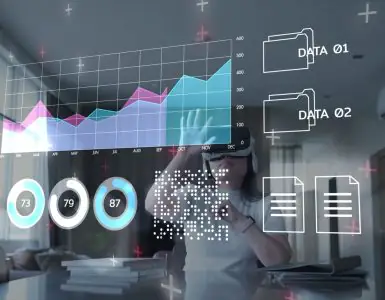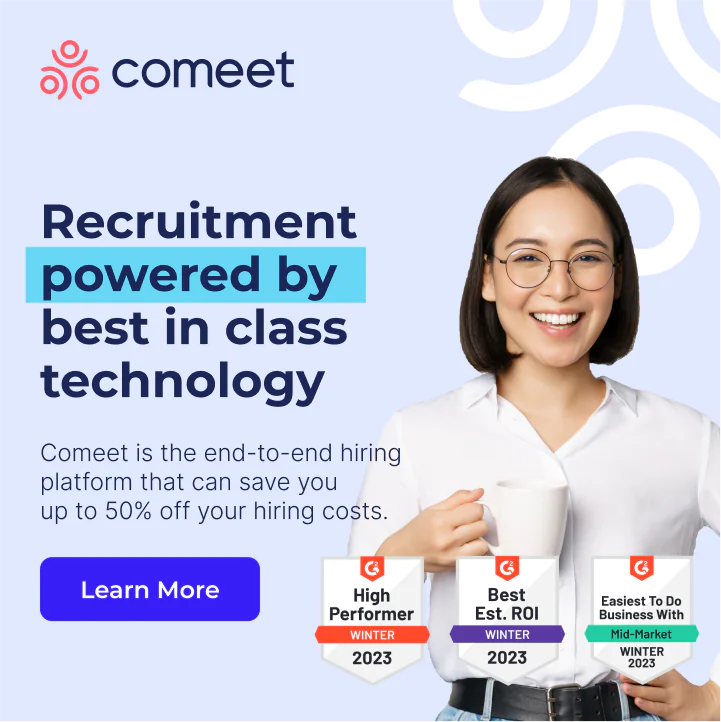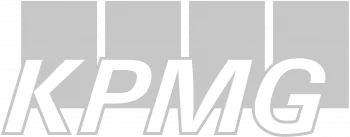You’ve no doubt heard about ChatGPT, and may be thinking about how ChatGPT is changing hiring. But as a recruiter, you may be asking yourself questions about how it can influence the way you work. You may wonder how ChatGPT will change recruiting or how AI will impact recruiting.
AI is quickly spreading into every industry, and the recruiting and hiring sphere is no different. With the rapid ascension of AI as a tool for solving workplace challenges, recruiters looking to change how they hire would be wise to see how AI can help.
In this post, we’ll look at ChatGPT, how it works, and other kinds of AI tools. Then we’ll discuss the benefits and challenges of incorporating AI tools into your recruiting efforts. Finally, we’ll provide a roadmap for how you can implement AI tools into your recruiting department.
Overview of ChatGPT and how it works
You may have heard about ChatGPT and its exceptional capabilities, but what exactly is it, and how does it work? According to its website, ChatGPT is a bot trained to “interact in a conversational way.” After the writer enters a prompt, ChatGPT responds with dialogue. It is also programmed to field any additional questions.
ChatGPT’s awareness and responsiveness highlight just how innovative and potentially transformative it is as a piece of technology. It can acknowledge its errors. It is also trained to notice an incorrect claim and deny prompts it deems inappropriate. What’s impressive about this tool is that it can formulate complex, detailed responses within mere seconds after the user enters a question.
You can design complex, intricate programs. You can create copy for emails, letters, or marketing materials. You can ask the program to write software code. There’s no guarantee it will all be 100% accurate (more on that below), but the sheer speed and efficiency with which the program works is quite impressive.
What makes ChatGPT so unique is its usefulness across industries. It seems as if just about every sector could stand to benefit from using this tool or one like it. With a few keystrokes, you can produce something new that would have taken minutes or hours to create in years past. This is representative of just how useful AI can be in many areas related to recruiting or hiring. If content creation is this easy due to AI, what other areas can it assist in?
ChatGPT is only the beginning of how AI can strengthen your organization. Let’s look at other AI tools you can use to recruit and hire candidates for your organization.
Other AI tools used in the hiring process
Of course, ChatGPT isn’t the only tool that uses AI to create content. JasperAI is another example of a platform with similar capabilities. That tool specifically targets copywriting capabilities, while ChatGPT’s charge is slightly broader. While ChatGPT can write copy for you, it can also create plans, programs, and code.
Other AI-based recruiting tools can assist in the hiring process. Virtual assistants are another excellent example. These can help employees stay organized by tracking task completion and sending automated reminders.
Machine learning algorithms are another innovation that can supercharge your recruiting and hiring efforts. They can identify current patterns, provide insight into a group of candidates’ qualifications, and examine job requirements to match the suitable candidates.
AI scheduling tools can also keep you connected with candidates throughout the process. Tools such as Calendly allow candidates to look at your hiring manager or recruiter’s schedule and pick a time for an appointment that works best for everyone. They’ll then receive automated appointments and reminders, updated whenever either party makes a change.
Resume filtering and candidate identification are other areas where AI/ML tools can play a significant role. When it comes to sourcing the best candidates, finding the right people can take time and effort in what seems like a sea of choices. AI-powered programs can search job boards and other locations online to find the right fit based on your customized specifications and job requirements. They can sort through thousands of job seekers to determine who has the right skills and experiences you’ll need for a role.
There is clearly no shortage of AI-based tools you can use when hiring people. Understanding how to use them and the cost-benefit analysis is a different question. First, let’s look at AI’s benefits for recruiting and hiring efforts.
Potential benefits of using AI
Two major benefits of using AI when hiring talent are the ability to streamline and automate your processes. When it comes to connecting with talent consistently, speed and promptness are critical. Automated functions make you less likely to let candidates slip through the cracks during recruitment. Having concise, simple-to-execute, repeatable, and automated processes take a heavy load off your recruiters’ shoulders. AI can help increase your recruiting team’s efficiency due to a reliance on automation that frees up your time for other projects. It allows them to focus on identifying the best candidates.
When it comes to identifying the best candidates, however, AI can help there as well. Resume screening tools (as mentioned above) can help you make more informed choices when evaluating the best pick for the job.
There are plenty of opportunities to improve how you communicate with your candidates. AI can assist you in developing templates for candidate communication. You can create any communication template you like. Remember that AI operators like ChatGPT will need to be fine-tuned to align with your brand voice.
Overall, when used correctly and carefully, AI can significantly increase your organization’s efficiency. It simplifies complex, repetitive processes. Menial, repeatable tasks that waste time and energy can be completed in seconds by a program instead of your staff.
Another major benefit of using AI is that it can quickly process large amounts of data. Imagine you open a new job listing and want to explore as many candidates as possible, listing the position on multiple job boards. You may receive hundreds of resumes in response, many of which seem qualified. In the past, you’d need to have someone manually go through all the resumes, combing them for the right qualifications and keywords. With innovations such as applicant tracking software (ATS) and other kinds of recruiting software, AI removes the grunt work aspect of this task. If you provide the correct input, you can pinpoint the right candidates in a matter of moments and analyze their profiles fast.
Of course, no technology is all positive. There are some serious issues with AI to consider, both in terms of challenges and ethical concerns that arise from its use. These challenges shouldn’t stop you from using AI for your hiring, but you’ll want to remain mindful of what they are.
Potential challenges and ethical considerations of using AI in the hiring process
While on its face, AI may seem like a capability that’s too good to be true, the truth is there are plenty of drawbacks to its use. One major challenge is that ChatGPT and other resources like it often come back with inaccurate data. The speed with which it creates content does not ensure accuracy. That means you’ll need to fact-check the work it generates.
From an efficiency standpoint, that can be problematic for recruiting teams looking to save time. When incorrect information trickles into your communications content, it can confuse potential candidates. It also means you’ll need to do additional research to back up the referenced claims. Ultimately, in cases like these, AI can cause you to take more time than if you created the copy yourself.
The information may also need to be updated. ChatGPT, in particular, only collects data and content from 2021 and earlier. That means that updates from 2022 on won’t necessarily be captured. In an industry where staying on top of the latest trends is critical, that can put you behind when creating copy or content.
If you’re a novice when writing prompts for AI programs like ChatGPT, you may take more time to get the results you want to see. ChatGPT and other AI tools are very intelligent, but they’re only as reliable as the information they’re given. You have to define precisely what you want the program to spit out.
There’s also an ethical concern to consider. AI pulls its information from website content produced by others without providing citations. While the content is wholly original in terms of the language used, the concepts and some terminology may be taken directly from others. That creates a controversy around plagiarism that many are still debating.
While these challenges shouldn’t necessarily preclude you from using AI, you should tread carefully and be aware of them. Your recruiting efforts will be impacted in many ways if you use AI to bolster them, and some of those have potentially adverse effects.
How to incorporate AI into your hiring process
For a recruiter focused solely on attracting and retaining great candidates, implementing new technologies can seem intimidating. There’s no reason it has to be, however. As long as you have a clearly defined roadmap for how you plan to integrate these tools into your existing recruiting efforts, you can tap into them with minimal disruption to your operation.
Below is a step-by-step plan for how to infuse AI into your hiring processes:
- First, document your current recruiting processes. What strategies do you have in place? What tools do you use?
- Perform a gap analysis. Once you’ve documented your processes, identify which ones work and which ones don’t. Where do you need the most work? Do you have trouble staying connected with candidates? Where are your inefficiencies and room for improvement? Get plenty of input from all of your recruiters, as well as HR, marketing, sales, and other departments you may engage with.
- Do your research. Find data on the AI tools that would help fill the gaps you have. Figure out what they can do, how you might implement them, and what they’ll cost.
- Create a proposal for your organization’s key decision-makers that involves potential changes to your budget. Show them how these tools will improve your recruiting operations. While they may add costs in the short term, the efficiency gained can lead to long-term savings and better results.
- Once you’ve decided on the tools you plan to use, share them with your recruiting team. Identify any necessary training needed and ensure they’re well-equipped to use the tools. Address all potential obstacles (i.e., ChatGPT may require additional fact-checking) so that users have a clear picture of what using each tool means.
This plan is challenging, but if you perform it with the right tools, you’ll find that your recruiting efforts are significantly aided.
Should you use AI for your recruiting and hiring needs?
There are plenty of inherent challenges when using AI. The information may be inaccurate, and using some of it may walk a fine ethical line. But above all else, there’s one aspect to consider about incorporating it into your operations.
AI isn’t going anywhere.
It’s not perfect right now, and it may never be. But anyone who sees this as a passing fad is mistaken. The toothpaste is out of the tube. AI is here to stay, and organizations can do one of two things. They can either lean into its use, determining how to derive the most value from it while balancing concerns around accuracy and plagiarism. Or they can ignore it and risk being left behind.
Ultimately, you’ll want to incorporate AI tools into your recruiting efforts in some form or another. That means accepting the risks and challenges and adapting to them. Otherwise, you may miss out on the many benefits that will make your recruiting efforts that much more efficient and effective.
With so many potential methods in which AI can help your recruiting, using it as a tool is a no-brainer. As with any emerging technological trends, you’ll want to keep an eye on them and merge it with your operations in ways that make sense and improve your bottom line.





























